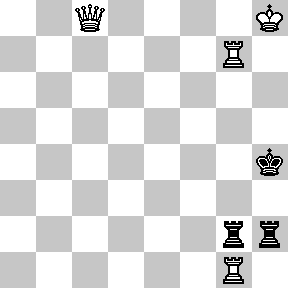
Sports Archives — The Altamont Enterprise, April 19, 2012
The triumph of hope over experience
Dr. Reich’s gift of chess books
will educate those who relish studying the game
By Peter Henner
I frequently take a rollup chess board and a set of old pieces with me on vacation, not just because of the possibility of meeting a fellow chess player, but also because I hope to find the time to play through some chess games from international tournaments or simply to be able to review chess literature.
Almost always, when I have set up my board, some person will demonstrate his ignorance, by depreciatingly asking if I am “playing chess with myself.” Readers of this column know that chess games can be recorded, reviewed, and that it is possible to engage in the serious study of chess.
To the non-chess player, chess is more like board games such as Monopoly or Parcheesi, and the idea of "studying chess" is a strange concept. However, chess literature goes back at least to the caliphate of Baghdad in the 8th Century.
I frequently describe the purchase of new chess books as the triumph of hope over experience; the belief that somehow I will actually both spend the time to read the new book that I have purchased, and that, if I actually do read it and study it carefully, it will significantly improve my play. Still, the formal study of chess has its own intellectual rewards.
Last week, I was contacted by Warren Reich, a Guilderland resident who has been reading my column, who asked me if I would be interested in receiving his collection of chess books. Dr. Reich, a retired University at Albany professor was a regular chess player until about 25 years ago, and had a collection of books gathered, as best I can tell, between the 1960s and the 1980s.
I was grateful to receive these books, some of which I will appropriate for myself, but many of which I will use to help the Albany Chess Club develop its own library of chess books, to be available to local chess players.
Many years ago, when I was a first-year law student, I was confronted with the “case method” of studying law — understanding how common-law is developed by studying decisions of judges to learn how these decisions establish legal principles. It was very familiar to me; chess players understand chess theory by studying actual games, where chess principles are tested in chess combat.
This week's problem
One of the avocations of chess players is the development of problems that are not necessarily related to the practical game of chess. One particular “art form” of chess problems is known as the “American Two Move Chess Problem.”
The solver is asked to find a forced mate in two moves, subject to certain rules and conventions. The first move cannot be either a check or a capture of a piece.
The idea is to find a move that appears improbable, but which will lead to mate regardless of whatever move is selected by the opponent.
The problem below, which was composed by Eric Hassberg, was first published in the New York Post in 1945 and also selected by I. A. Horowitz and P.L. Rothenberg as the leading example of the genre in his Complete Book of Chess, published in 1963.

White to play and mate in two moves
Chess Solution
1. Qc2 threatening Qh7 mate
If 1…R:c2, 2.Rh7 mate
If 1…R:g7 or R:g1, 2.Q:h2 mate